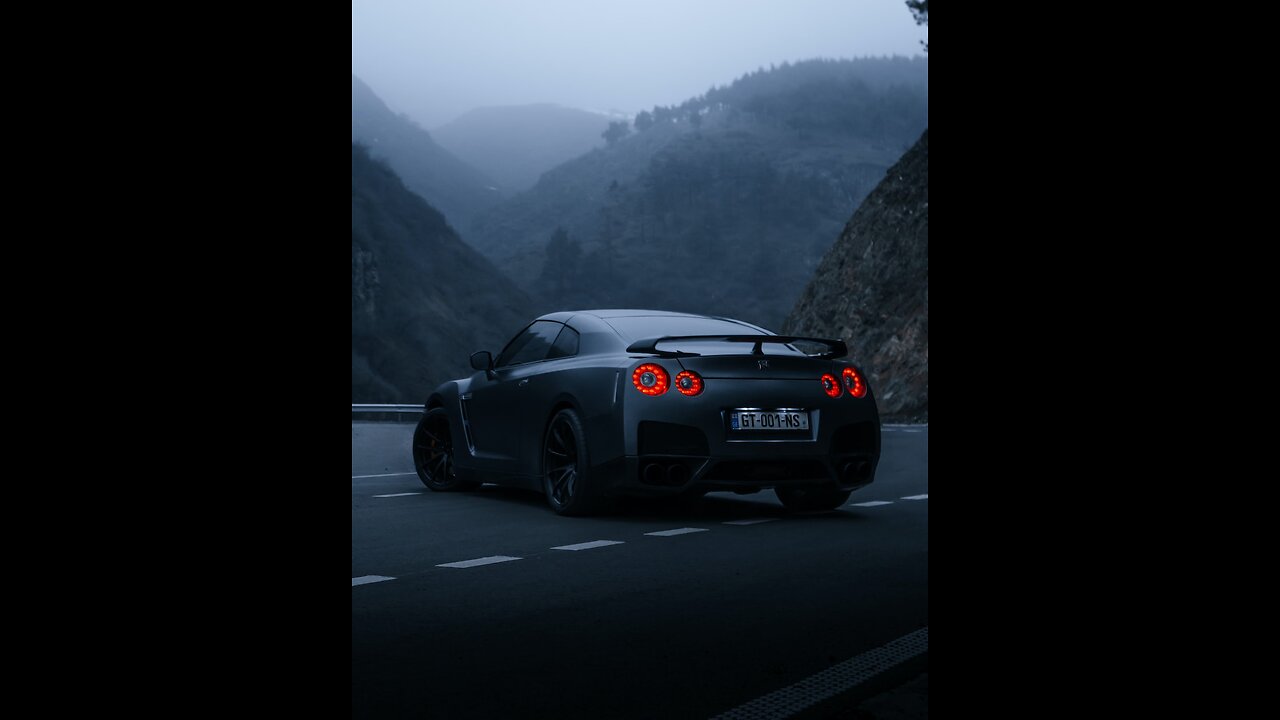Premium Only Content

GTR R35 Flame spitting
The Nissan GT-R R35, renowned for its incredible performance and cutting-edge technology, is a sports car that has captured the hearts of automotive enthusiasts worldwide. When we talk about "flame spitting" in the context of a GT-R R35, we're referring to the dramatic phenomenon where flames momentarily shoot out of the exhaust system during aggressive acceleration or deceleration, often accompanied by exhilarating exhaust pops and crackles. This effect adds a thrilling visual and auditory spectacle to the already impressive performance of the GT-R.
Key points about flame spitting in a GT-R R35:
Performance Beast: The GT-R R35 is powered by a potent twin-turbocharged V6 engine, known as the "VR38DETT," which generates impressive horsepower and torque. When the engine's power is unleashed, it can create unburnt fuel in the exhaust system, leading to the exciting flame spitting effect.
Exhaust Setup: Many GT-R owners and aftermarket tuners modify the exhaust system to enhance the performance and create this captivating flame-spitting display. A high-performance aftermarket exhaust with features like anti-lag systems or aggressive tuning can increase the likelihood of producing flames during certain driving conditions.
Dynamic Driving: Flame spitting often occurs during spirited driving, such as aggressive acceleration or deceleration, especially when the engine is operating at higher RPMs. The GT-R's launch control and rapid gear changes, along with the car's advanced traction control system, can contribute to creating the right conditions for flames to shoot from the exhaust.
Exhaust Flames: The sight of flames momentarily shooting out from the exhaust pipes, especially during nighttime or in low-light conditions, is a thrilling spectacle that captures attention and adds to the GT-R's iconic status.
Safety Considerations: While flame spitting is exciting, it's important to note that this effect can be the result of unburnt fuel in the exhaust, and it can pose potential risks, such as damaging the exhaust system, causing fires, or adversely affecting emissions components.
It's essential to exercise caution and be aware of the local laws and regulations regarding aftermarket modifications and emissions control. The flame-spitting effect, while captivating, should always be approached responsibly, and any modifications should be carried out with a proper understanding of their implications on the car's performance and safety.
-
 7:12
7:12
MichaelMotamedi
17 hours ago $0.60 earnedInside the Sacred World of Rastafarian Food
6.07K4 -
 11:24
11:24
LFA TV
1 day agoARTIFICIAL INTELLIGENCE SAYS J6 JUDGES ARE CORRUPT!
8.02K4 -
 9:02
9:02
ARFCOM News
15 hours ago $0.93 earnedTrump Fixes Concealed Carry | Time Travelling Judge | DoJ Goes After CA Infringements
7.53K2 -
 18:05
18:05
Mrgunsngear
14 hours ago $1.87 earnedHeckler & Koch VP9A1 K Review: The Best Do All Handgun?
9.61K4 -
 14:40
14:40
Clownfish TV
13 hours agoDisney Getting DESTROYED by YouTube...
7.69K3 -
 10:28
10:28
ariellescarcella
13 hours agoThis Is NOT A Normal Face : The Psychology Behind Woke Manipulation
5.99K2 -
 57:56
57:56
CharLee Simons Presents Do Not Talk
2 days agoHow to Win the Minds of the APATHETIC RIGHT with Joe Ming & Sam Anthony
4.9K -
 9:15
9:15
VSOGunChannel
10 hours ago $0.34 earnedWhy Haven't They Freed the ATF's Political Prisoners?
4.03K4 -
 49:01
49:01
Standpoint with Gabe Groisman
1 day agoHigh Fashion Canceled Her for Working for Trump
15.3K6 -
 36:24
36:24
The Brett Cooper Show
1 day ago $17.32 earnedSnow White. What Happened? | Episode 18
108K74